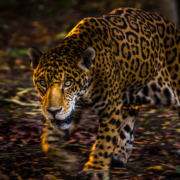Capturing Motion: The Art of Sports Photography
Sports photography is an exciting genre that allows photographers to freeze moments of
intense action and capture the raw emotions of athletes in motion. From the thrill of a
winning goal to the power of a perfectly executed slam dunk, sports photography
presents unique challenges and opportunities. In this article, we will explore the art of
sports photography and provide valuable tips to help you capture the essence of athletic
motion in your images.
To effectively capture motion in sports photography, a fast shutter speed is essential. Set
your camera to a high shutter speed to freeze the action and capture sharp images. A
shutter speed of 1/1000th of a second or faster is typically recommended, but adjust it
based on the specific sport and level of action you’re photographing.
Anticipating the action is key to capturing the peak moments. Familiarize yourself with the
sport you’re photographing, study the athletes’ techniques, and predict their
movements. By understanding the flow of the game or event, you’ll be better prepared
to capture those decisive moments.
Utilize burst mode or continuous shooting mode to capture a rapid series of images with a
single press of the shutter button. This increases your chances of getting the perfect
shot and ensures you don’t miss any critical moments. However, be mindful of your
memory card capacity and shoot in bursts wisely to avoid overwhelming yourself with
too many similar shots during post-processing.
Focusing on the eyes of the athletes adds depth and connection to your images. Set your
camera’s autofocus point to the athlete’s eyes or face to ensure they remain in sharp
focus. This technique draws viewers into the action and allows them to feel the intensity
of the moment.
Experiment with different angles to capture the dynamic energy and movement of the
athletes. Get low to the ground for a dramatic ground-level perspective or shoot from a
higher vantage point for a bird’s-eye view. Varying your shooting angles adds visual
interest and a unique perspective to your sports images.
Panning is a technique that involves tracking the subject’s movement while keeping it in
focus, resulting in a sharp subject against a blurred background. This technique adds a
sense of speed and motion to your images. Practice panning by following the athletes’
movement with your camera while using a slower shutter speed, usually around 1/60th
of a second or slower, depending on the speed of the subject.
Composition plays a crucial role in sports photography. Use the rule of thirds, leading lines,
and framing techniques to create visually engaging and balanced images. Position the
athletes off-center to allow space for them to move within the frame. Consider the
background and foreground elements to add depth and context to your shots.
Capturing the emotions of the athletes is equally important. Look for moments of
celebration, determination, or even disappointment. These emotional moments bring a
human element to your images and make them more relatable and impactful.
sports photography requires a combination of technical skill, anticipation, and
creativity to capture the essence of athletic motion. By mastering fast shutter speeds,
anticipating the action, using burst mode, focusing on the eyes, experimenting with
angles, utilizing panning, and paying attention to composition and emotion, you can
freeze the thrill and excitement of sports in captivating images. So, grab your camera,
head to the field, and embark on an exhilarating photographic journey to capture the art
of motion in sports photography.

